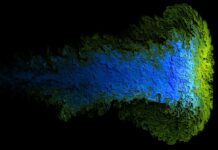Biospace, also known as biospace or biological space, is a fascinating and critical concept that encompasses various dimensions and scales within the realm of life and living organisms. It pertains to the physical, ecological, and evolutionary spaces that organisms occupy and interact with, both on Earth and potentially beyond. The study of biospace is a multidisciplinary field that draws upon biology, ecology, geography, astronomy, and even space exploration, as it seeks to understand the complex relationships between living organisms and their environments.
At its core, biospace encompasses the interconnectedness of life on our planet and how living organisms adapt, evolve, and coexist within their unique habitats. It investigates the distribution of life across different ecosystems, the patterns of biodiversity, and the factors that influence these dynamics. This concept extends beyond our planet and delves into the possibilities of life existing in outer space, where the search for extraterrestrial life becomes an essential aspect of biospace exploration.
The study of biospace on Earth involves various scales, ranging from the microcosmic level of individual cells and organisms to the macrocosmic level of ecosystems and biomes. Understanding biospace requires analysis of ecological niches, which are specific roles and positions that organisms occupy within their respective habitats. Ecological niches determine how species interact with one another and their environment, influencing population dynamics and evolution.
As we explore biospace, five key points emerge as vital aspects to comprehend:
1. Biodiversity: Biodiversity refers to the variety and variability of life forms in a given biospace. It encompasses the richness of species, genetic diversity within those species, and the diverse ecological roles organisms play in their habitats. High levels of biodiversity are critical for ecosystem stability and resilience, as well as providing potential benefits to human well-being, including ecosystem services like clean air, water, and food.
2. Habitability and Exobiology: Biospace delves into the concept of habitability, exploring environments where life can thrive. This includes extreme environments on Earth, such as deep-sea hydrothermal vents or acidic hot springs, as well as potentially habitable regions on other celestial bodies, such as Mars or some moons in our solar system. Exobiology, a branch of biospace exploration, aims to search for signs of life beyond Earth and understand the potential habitability of other worlds.
3. Ecological Interactions: Within any biospace, interactions between species and their environment play a fundamental role in shaping ecosystems. Predation, competition, symbiosis, and other ecological relationships impact the distribution and abundance of species. Understanding these interactions is essential for predicting ecosystem changes due to natural or human-induced factors, like climate change or habitat destruction.
4. Conservation and Sustainability: The study of biospace emphasizes the importance of conservation and sustainable practices to protect biodiversity and maintain ecological balance. Human activities, such as deforestation, pollution, and overexploitation of natural resources, have significant impacts on biospace. Conservation efforts aim to safeguard species and ecosystems, ensuring their survival and the well-being of future generations.
5. Astrobiology: As an extension of biospace exploration, astrobiology seeks to understand the potential for life beyond Earth. This multidisciplinary field combines aspects of biology, astronomy, and planetary science to identify habitable conditions on other planets and moons. Astrobiologists analyze celestial bodies’ atmospheres and surfaces, searching for biosignatures, or signs of life, to inform future space missions and the quest for extraterrestrial life.
Biospace is a multifaceted concept that examines the interplay between life and its environment, spanning various scales from microcosmic to macrocosmic, and encompassing habitats on Earth and potentially beyond. Understanding biospace involves grasping the intricate relationships between species and their ecological roles, recognizing the significance of biodiversity and conservation efforts, and exploring the possibilities of life in the vastness of space. It is a field of exploration that unites scientific disciplines in the pursuit of unraveling the mysteries of life and its place in the universe.
Continuing with the exploration of biospace, its multidisciplinary nature allows scientists to uncover unique insights into the ever-changing dynamics of life on Earth. By studying the distribution of organisms across different habitats, researchers gain valuable knowledge about the factors that shape ecosystems and influence evolutionary processes. This understanding is crucial for developing effective conservation strategies to safeguard fragile ecosystems and protect endangered species.
Moreover, the concept of habitability extends biospace exploration beyond our planet’s boundaries. The search for potential life on Mars, Europa, Enceladus, and other celestial bodies opens up new frontiers in astrobiology. Scientists use advanced telescopes and space missions to detect biosignatures that could indicate the presence of life beyond Earth. The study of biospace not only unveils the wonders of life in the universe but also raises profound questions about humanity’s place in the cosmos.
Within biospace, the intricate web of ecological interactions shapes the resilience of ecosystems. The delicate balance between predators and prey, the intricate dance of mutualistic relationships, and the competition for resources all contribute to the intricate tapestry of life on Earth. Understanding these interactions allows scientists to predict the consequences of environmental changes and human activities on biodiversity and ecological health.
Conservation and sustainability are at the forefront of biospace concerns. With the alarming rate of biodiversity loss and ecosystem degradation, conservation efforts are essential for preserving the natural heritage of our planet. By protecting critical habitats and implementing sustainable practices, we can ensure that future generations inherit a diverse and healthy biospace that can sustain their needs and provide the services necessary for human well-being.
As biospace research advances, the boundaries of knowledge expand. The field brings together scientists from diverse backgrounds, promoting collaboration and innovative thinking. The exploration of biospace not only yields scientific discoveries but also stimulates philosophical discussions about life’s origins, its potential prevalence in the universe, and the ethical considerations of our actions on Earth and beyond.
In conclusion, biospace is a captivating and multidimensional concept that delves into the interconnectedness of life within its various environments. From the smallest cellular level to the grandest celestial scale, biospace studies reveal the beauty and complexity of life and its relationships with the world around us. Biodiversity, habitability, ecological interactions, conservation, and astrobiology stand out as key focal points in this exploration. The study of biospace serves as a reminder of our responsibility as stewards of the planet, encouraging us to appreciate the incredible diversity of life and to protect the delicate balance that sustains all living organisms. With each new discovery and exploration of the cosmos, our understanding of biospace expands, offering a window into the profound mysteries of life’s existence in the universe.






















